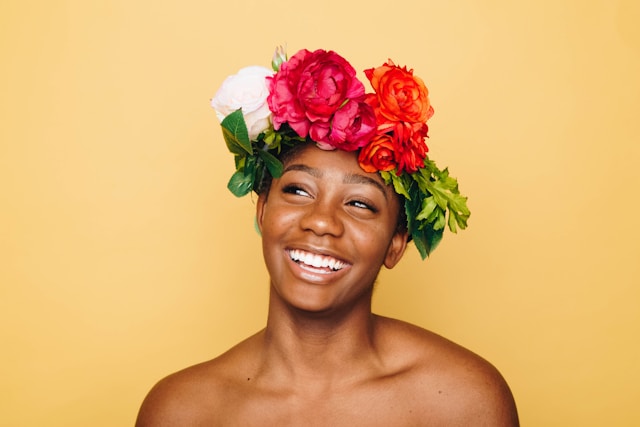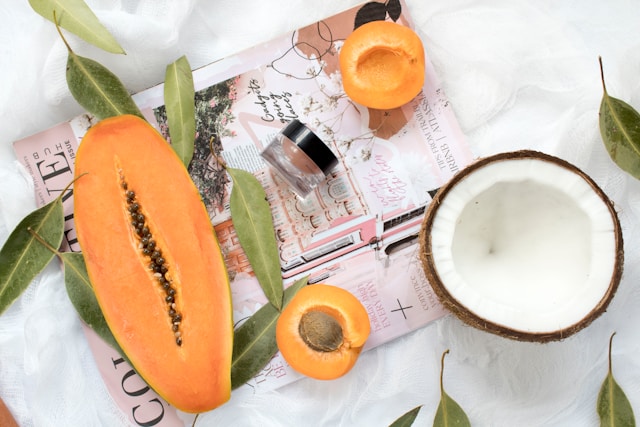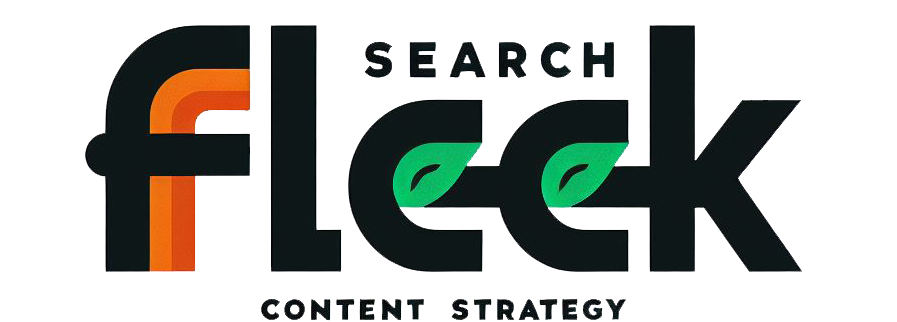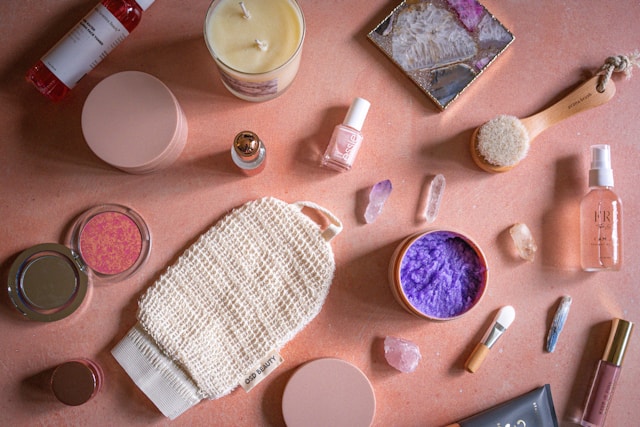The world of beauty is constantly evolving, with new trends, products, and techniques emerging all the time. Beauty blogs have become a powerful force in this ever-changing landscape, offering valuable advice, product reviews, and inspiration to a vast audience.
Whether you’re a passionate makeup enthusiast or a skincare novice, starting a beauty blog can be a rewarding way to share your knowledge, express your creativity, and connect with like-minded individuals. This comprehensive guide will equip you with the tools and strategies needed to launch a successful beauty blog that thrives in the ever-growing online beauty community.
Finding Your Niche and Developing Your Voice
The beauty blogging landscape is vast and diverse. Before diving into the technical aspects of setting up your blog, take some time to explore your area of expertise and develop a unique voice that will resonate with your target audience.
The Beauty Landscape is Vast
From in-depth makeup tutorials and unbiased product reviews to natural beauty hacks and haircare routines, the world of beauty blogging offers something for everyone. Here are just a few of the popular subgenres:
- Makeup Tutorials: Create step-by-step guides for achieving specific makeup looks, catering to different skill levels and occasions.
- Skincare Reviews: Offer honest reviews of skincare products, analyzing ingredients, effectiveness, and suitability for various skin types.
- Natural Beauty Hacks: Share DIY beauty recipes using natural ingredients and promote eco-friendly and sustainable beauty practices.
- Haircare Routines: Provide detailed guides for maintaining healthy hair, addressing common concerns like dryness or frizz, and showcasing different styling techniques.
- Men’s Grooming: Cater to a growing male audience by offering advice on skincare routines, shaving tips, and product recommendations for men.
Identifying Your Niche
Focusing on a specific area of beauty allows you to establish yourself as an expert, attract a dedicated audience, and stand out from the crowd. Consider your own interests and expertise when choosing your niche. Here are some additional factors to consider:
- Personal Passions: What aspects of beauty are you most passionate about? Do you have a knack for creating dramatic smokey eye looks or a deep understanding of Korean skincare routines? Focus on a niche that excites you and allows you to share your genuine enthusiasm.
- Target Audience: Who do you want to reach with your blog? Are you targeting makeup enthusiasts on a budget or individuals with sensitive skin seeking natural skincare solutions? Understanding your ideal reader will help you tailor your content and choose a niche that caters to their specific needs.
- Market Saturation: Research existing beauty blogs within your chosen niche. While some competition is healthy, avoid oversaturating a market with similar content. Look for gaps in existing content or identify unique perspectives you can offer.
Developing Your Voice and Style
Your voice is what sets your blog apart. It’s your personality, expertise, and writing style shining through in your content. Here’s how to cultivate a strong voice:
- Be Authentic: Let your personality shine through! Avoid sounding robotic or mimicking other bloggers. Your passion and unique perspective will draw readers in and make your blog memorable.
- Establish Your Expertise: Demonstrate your knowledge of the beauty industry. Back up your claims with research and personal experience.
- Write in a Clear and Engaging Style: Use concise and easy-to-understand language. Infuse your writing with personality while maintaining professionalism.
- Find Inspiration: Read other beauty blogs you admire, but avoid copying their style completely. Analyze what resonates with you about their writing and use it to refine your own voice.
Analyzing Successful Beauty Blogs
Learning from successful beauty bloggers can be a valuable exercise. Research popular blogs within your niche or those that stand out for their overall content and audience engagement. Consider the following aspects:
- Content Strategy: Analyze the types of content they create (e.g., tutorials, reviews, Q&A sessions). What content formats seem to resonate most with their audience?
- Visual Appeal: Notice how they use high-quality images, swatches, and graphics to enhance their content.
- Community Building: How do they interact with their readers? Do they encourage comments and discussions?
- Monetization Strategies: If they monetize their blog (through advertising, affiliate marketing, etc.), observe how they do so in a way that feels organic and doesn’t detract from the reader experience.
By understanding the success factors of other beauty blogs, you can gain valuable insights and formulate a strategy for your own blog’s growth.
Building Your Beauty Blogging Platform

Now that you have a clear vision for your beauty blog, let’s get down to the technical aspects of setting it up.
Choosing a Blogging Platform
Here’s a breakdown of some popular blogging platforms to help you choose the one that best suits your needs:
- WordPress: This self-hosted platform offers ultimate flexibility and control over design and functionality. It has a learning curve, but numerous plugins and themes cater specifically to bloggers.
- Blogger: This free platform from Google offers a user-friendly interface and is easy to set up. However, customization options are limited compared to self-hosted platforms.
- Wix: This drag-and-drop website builder offers beautiful templates and ease of use, making it ideal for beginners. However, customization options for bloggers might be more limited.
Consider the following factors when making your choice:
- Technical Skills: If you’re comfortable with some technical aspects, WordPress offers the most control. Blogger and Wix are user-friendly options for beginners.
- Budget: WordPress requires purchasing a domain name and hosting, while Blogger is free. Wix offers both free and paid plans with varying features.
- Customization Needs: Do you envision a highly customized blog design? WordPress offers the most flexibility. Blogger and Wix have limitations, but offer a range of pre-designed templates.
Selecting a Domain Name and Hosting
Your domain name is your blog’s address on the internet, so choose something memorable and relevant to beauty. Ideally, it should be easy to spell and type. Reliable web hosting ensures your blog is accessible online. Many platforms offer domain registration and hosting packages for a reasonable fee.
Here are some tips for choosing a domain name:
- Keep it short and memorable.
- Use keywords related to beauty.
- Make it easy to spell and pronounce.
- Check for availability and potential trademark conflicts.
For web hosting, look for a reliable provider with good uptime (the percentage of time your website is accessible) and customer support.
Designing Your Blog
A visually appealing and user-friendly blog design will keep readers engaged and coming back for more.
Here are some key elements to consider:
- Theme: Choose a theme that complements your content and niche. Look for themes designed specifically for beauty blogs, often featuring clean layouts and functionalities to showcase visuals.
- Color Scheme: Select a color scheme that is visually appealing and reflects your brand identity. Avoid overly busy or clashing colors.
- High-Quality Images: Beauty blogs rely heavily on visuals. Use high-resolution photos, clear swatches for makeup reviews, and informative infographics to enhance your content.
- Readability: Choose easy-to-read fonts and ensure sufficient contrast between text and background colors.
- Mobile Responsiveness: In today’s mobile-centric world, ensure your blog displays optimally on all devices, from desktops to smartphones.
Several platforms offer themes specifically designed for beauty blogs. Remember, your blog’s design should showcase your creativity and personality but prioritize a user-friendly experience for your readers.
Optimizing for Search Engines (SEO)
Search engine optimization (SEO) helps potential readers discover your blog through organic search results. Here are some basic SEO concepts to get you started:
- Keyword Research: Identify relevant keywords that people might use to search for beauty-related topics within your niche. Popular keyword research tools can help you with this.
- Meta Descriptions: Craft compelling descriptions that summarize your blog content and entice readers to click on your search result.
- Internal Linking: Link your blog posts to each other to improve website navigation and SEO. You can also link to reputable external sources to add credibility to your content.
- Image Optimization: Optimize image file sizes and include relevant alt tags describing the image content. This helps search engines understand your visuals and improves accessibility for visually impaired readers.
While SEO is a complex field, implementing these basic practices will increase your blog’s visibility in search engines and drive organic traffic.
Essential Plugins for Beauty Bloggers
Here are some helpful plugins to consider for your beauty blog, depending on the platform you choose:
- Image Optimization Plugins: Optimize image file sizes and add alt text descriptions for improved SEO and website performance.
- Gallery Plugins: Create beautiful and engaging image galleries to showcase product photos, makeup looks, and before-and-after comparisons.
- Social Sharing Plugins: Make it easy for readers to share your content on social media platforms.
- Contact Form Plugins: Integrate a user-friendly contact form to allow readers to get in touch with you.
- Comment Management Plugins: Moderate comments and foster a positive and respectful community within your blog.
These plugins can streamline your workflow, enhance your blog’s functionality, and improve the user experience for your readers.
Creating Engaging and Informative Content
The heart of your beauty blog lies in the quality and variety of content you create. Here’s how to develop a content strategy that keeps readers engaged and coming back for more.
Content Pillars
Think of content pillars as foundational categories that serve as the backbone of your blog. They represent the core topics you’ll consistently cover within your niche. Here are some popular content pillars for beauty blogs:
- Product Reviews: Offer in-depth reviews of new and established beauty products, analyzing ingredients, effectiveness, and suitability for different skin types or needs.
- Tutorials: Create step-by-step guides for achieving specific makeup looks, hairstyles, or skincare routines. Cater to different skill levels and occasions (e.g., everyday makeup, dramatic evening looks).
- “Holy Grail” Product Lists: Compile lists of your favorite beauty products within specific categories (e.g., best drugstore mascaras, must-have skincare products for oily skin).
- Trend Reports: Discuss and showcase emerging beauty trends in makeup, skincare, and haircare. Offer your own interpretations and tips on incorporating these trends into your routine.
Beyond the Basics: Expanding Your Content Strategy
While content pillars form the core of your blog, explore creating diverse content to keep your audience engaged:
- Beauty Routines for Different Occasions: Offer customized beauty routines for specific events like weddings, job interviews, or a night out.
- Debunking Beauty Myths: Address common beauty misconceptions with research-backed information and practical advice.
- Interviews with Makeup Artists or Skincare Experts: Offer readers insights from industry professionals through interviews or guest posts.
- DIY Beauty Hacks: Share budget-friendly and natural alternatives for popular beauty treatments or products.
By offering a variety of content formats and venturing beyond product reviews and tutorials, you cater to a wider range of interests and keep your blog fresh and exciting.
High-Quality Visuals: The Power of Images
Beauty blogs are highly visual. High-quality photos, informative infographics, and clear swatches (for makeup reviews) are essential for enhancing your content and engaging readers.
Here are some tips for using visuals effectively:
- Invest in good lighting and a high-resolution camera: This ensures crisp and clear photos that showcase products and makeup looks accurately.
- Edit photos for consistency: Maintaining a consistent aesthetic through color correction and editing helps create a professional look for your blog.
- Create informative infographics: Use infographics to visually represent complex information like skincare routines or product ingredients.
- Swatches for makeup reviews: Include clear swatches of makeup products on different skin tones to help readers visualize color payoff and texture.
Remember, visuals are a powerful way to grab attention, communicate information quickly, and make your blog more visually appealing.
Writing Style: Clear, Concise, and Engaging
Your writing style plays a crucial role in connecting with your readers. Aim for a clear, concise, and informative tone that caters to various levels of beauty expertise.
Here are some pointers to refine your writing style:
- Use simple and easy-to-understand language. Avoid overly technical jargon or beauty industry terms that may confuse some readers.
- Break down complex concepts. If you must discuss scientific ingredients or skincare procedures, explain them in a way that is easy to digest.
- Infuse your personality. Let your enthusiasm and passion for beauty shine through in your writing. This makes your blog more relatable and engaging.
- Proofread carefully. Ensure your writing is free of grammatical errors and typos for a professional look.
By maintaining a clear and engaging writing style, you ensure your readers can easily understand your content and connect with your voice.
Maintaining Consistency: A Key to Growth
Building a loyal readership takes time and effort. Develop a consistent posting schedule, whether it’s weekly, bi-weekly, or monthly, and stick to it as much as possible. Readers appreciate knowing when to expect new content, and consistency helps build anticipation and keep them engaged.
Promoting Your Beauty Blog and Building a Community

Once your blog is up and running with engaging content, the next step is to get it noticed and cultivate a loyal community of readers.
Social Media Marketing: Reaching a Wider Audience
Social media platforms offer a powerful tool to connect with potential readers, establish yourself as an expert, and promote your blog content. Here are some effective strategies:
- Choose the right platforms: Identify platforms where your target audience is most active. Popular options for beauty blogs include Instagram, YouTube, Pinterest, and TikTok.
- Create high-quality visual content: Since beauty is a visual medium, prioritize eye-catching visuals on your social media platforms. Share snippets of your tutorials, product flat lays, and behind-the-scenes glimpses into your creative process.
- Utilize relevant hashtags: Use relevant hashtags to increase discoverability. Research trending hashtags and create your own unique ones for specific posts or series.
- Engage with other beauty bloggers and followers: Follow and interact with other beauty accounts relevant to your niche. Participate in discussions, respond to comments, and build relationships within the online beauty community.
Collaborations with Other Beauty Bloggers
Reach a wider audience and expand your network by collaborating with other beauty bloggers. Here are some potential collaboration ideas:
- Guest Posting: Offer to write a guest post for another beauty blog that caters to a similar audience. This allows you to showcase your expertise to a new audience and gain backlinks to your own blog, which is beneficial for SEO.
- Joint Giveaways: Partner with another blogger to host a joint giveaway featuring products relevant to your combined audience. This generates excitement and attracts new followers to both blogs.
- Social Media Challenges: Collaborate on a social media challenge related to beauty. This is a fun way to engage your existing audience and reach potential new followers.
Engaging with Your Readers: Building a Two-Way Street
Fostering interaction with your readers creates a sense of community and encourages them to keep coming back. Here are some ways to engage with your audience:
- Encourage comments: Ask questions at the end of your posts to encourage readers to share their thoughts and experiences. Respond to comments promptly and create a space for open communication.
- Host Q&A sessions: Dedicate specific posts or social media sessions to answering reader questions about beauty, skincare, or makeup.
- Polls and surveys: Utilize polls and surveys to understand your audience’s preferences and tailor your content accordingly.
- Live videos: Consider hosting live videos on platforms like Instagram or YouTube to interact with your audience in real-time, answer questions, and showcase beauty tutorials in a more interactive way.
Remember, building a community around your blog goes beyond simply posting content. By creating a space for interaction and valuing your readers’ opinions, you foster loyalty and create a thriving online community.
The Business of Beauty Blogging: Monetization Strategies
While your primary focus might be sharing your passion for beauty, there are various ways to potentially generate income from your blog. Here are a few options to consider:
Affiliate Marketing
Partner with beauty brands or retailers to promote their products through affiliate links. When a reader clicks on your affiliate link and makes a purchase, you earn a commission.
Here are some key aspects to consider for successful affiliate marketing:
- Promote products you genuinely love and use. Your audience trusts your recommendations, so maintain authenticity in your endorsements.
- Disclose affiliate relationships transparently. Inform your readers when you’re using affiliate links to maintain trust and credibility.
- Choose reputable brands and retailers. Partner with companies that offer high-quality products and reliable customer service.
Sponsored Content
Collaborate with brands to create sponsored content promoting their products or services. This could involve product reviews, sponsored tutorials, or exclusive discount codes for your readers.
Here are some important considerations for sponsored content:
- Maintain editorial control. Ensure you have a say in the creative direction of the sponsored content and that it aligns with your blog’s voice and values.
- Disclose sponsored content clearly. Readers deserve to know when a post is sponsored, so ensure proper disclosure to maintain transparency.
- Deliver high-quality content. Sponsored content should still be valuable and informative for your audience, not just a sales pitch for the brand.
Selling Digital Products
Consider creating and selling digital products related to beauty. These could include:
- E-books: Compile your expertise into an e-book offering in-depth guides to specific Your domain name.
- Online courses: Develop online courses that teach viewers specific skills like makeup artistry or creating a personalized skincare routine.
By offering valuable digital products, you provide additional resources for your readers while generating potential income.
Remember: Building a sustainable income from your blog takes time and effort. Focus on creating high-quality content, fostering a strong community, and providing value to your readers. As you establish yourself and gain a loyal following, the monetization opportunities will grow organically.
Here are some additional points to consider for ethical and sustainable monetization:
- Diversify your income streams: Don’t rely solely on one method. Combine affiliate marketing, sponsored content, and selling digital products to create a more robust income stream.
- Focus on building long-term partnerships: Developing long-term relationships with brands you genuinely admire and trust allows for mutually beneficial collaborations.
- Maintain transparency and authenticity: Your audience values your honest opinions and recommendations. Avoid promoting products solely for the sake of making money.
- Provide value above all else: Monetization should never overshadow the core purpose of your blog: to share your passion for beauty and empower your readers.
Bonus Section: Resources for Aspiring Beauty Bloggers
Here’s a list of helpful resources to empower you on your beauty blogging journey:
- Websites:
- Makeup Alley: A vast online community for beauty enthusiasts, offering product reviews, discussions, and beauty trends.
- Future of Beauty: Industry news and insights on the latest advancements in beauty science and technology.
- TrendHunter: A platform showcasing emerging trends across various industries, including beauty, for trendspotting and inspiration.
- YouTube Channels:
- Wayne Goss: Renowned makeup artist Wayne Goss offers in-depth makeup tutorials and insightful product reviews.
- Lisa Eldridge: Makeup artist Lisa Eldridge features celebrity makeup tutorials, product reviews, and beauty history explorations.
- Hyram Yarbro: Skincare expert and influencer known for his science-backed skincare advice and product breakdowns.
- Online Courses:
- Skillshare: Offers various beauty-related courses, from makeup artistry to skincare science, taught by industry experts.
- Udemy: Similar to Skillshare, Udemy provides a range of beauty courses for both beginners and aspiring professionals.
- CreativeLive: Offers live workshops and online classes on various creative topics, including beauty photography and makeup artistry.
Remember, this is just a starting point! Explore these resources and discover more as you delve deeper into the world of beauty blogging.
Throughout your journey, stay curious, experiment, and most importantly, have fun! Sharing your passion for beauty with the world can be a rewarding and enriching experience.
Conclusion
The world of beauty blogging is a vibrant and ever-evolving space. With dedication, creativity, and the strategies outlined in this guide, you can launch a successful beauty blog that thrives in the online community. Remember, the journey itself is a key ingredient to success. Embrace the process of learning, experimenting, and refining your craft.
By consistently delivering high-quality content, building a strong community, and exploring potential monetization options, you can turn your passion for beauty into a thriving online platform. So, unleash your creativity, embrace the power of words and visuals, and embark on your exciting journey as a beauty blogger!
Emon Anam, CEO of Search Fleek, isn't your typical digital guru. He brings a unique blend of financial expertise (former banking pro!) and digital marketing mastery to the table. A self-proclaimed "SEO Sherlock Holmes," Emon unlocks content secrets for local businesses and SaaS companies. But beyond the keyboard, he's a devoted family man, music enthusiast, and cricket champion. Let Emon weave your digital success story!
AI Writing Disclaimer
This post was initially researched and outlined by me. The content was then generated by an AI language model using the provided information. The final text has been reviewed and edited by me for accuracy and clarity.




